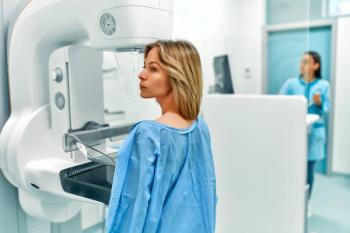
A Coordinated Medical Record System Is 96% Outpatient Focused
The seventh in a series on a hypothetical CMR system to fix American healthcare.
Editor’s note: This article is the seventh in an ongoing series by James McGauley, M.D., on the idea of a Coordinated Medical Record system, which literally produces a single comprehensive medical record for every patient. The record contains all of the patient’s clinical and financial healthcare information over space and time. The credit card industry is the model. This type of information system will do more to increase the quality and decrease the cost of healthcare simultaneously than any other single initiative
A Coordinated Medical Record system is primarily designed to capture and organize outpatient data because 96% of healthcare encounters occur in the outpatient arena. There are about one billion outpatient visits every year compared to only about 36 million hospitalizations.
On a daily basis, there are about 2,750,000 patient-physician encounters in numerous outpatient settings across the country. By contrast, there are only about 98,000 daily admissions to hospitals. There are twenty-eight times more changes being made to patients’ ongoing medical records from outpatient encounters every day than are being made from hospital encounters.
Inpatient vs Outpatient IT and Data Management Requirements
Inpatient and outpatient healthcare settings have significantly different information technology and data management requirements.
The inpatient setting is a closed environment. All healthcare is delivered within the walls of the single institution. Massive amounts of data are captured in a short time span. Minute to hourly changes in a patient’s vital signs, temperature and medication regimen are recorded. Multiple laboratory, radiology, diagnostic and therapeutic procedure results are documented in a short time span. All of this data is technically available to all of a patient’s caregivers in the institution in real-time. It is only the discharge data that significantly alters a patient’s ongoing medical record.
By contrast, outpatient caresites are physically disconnected. They deal with a relatively small amount of data at the time of any particular patient encounter, but every change to that data significantly alters the patient’s ongoing medical record. Communication of data between caresites is delayed and inconsistent.
A Patient’s Clinical Profile: Diagnoses, Procedures and Medications
As complex as the healthcare industry seems to be, there actually is an underlying simplicity to it. The primary purpose of every patient-physician encounter is to arrive at a correct diagnosis and prescribe the correct treatment in the most expeditious manner possible.
From a medical record standpoint, the purpose of every encounter is to confirm, modify, add to, or delete the information in three specific categories — diagnoses, procedures, and medications. This is the information that populates the Face Sheet/Summary Sheet that sits in the front of every patient’s medical record. This is the baseline information that every caregiver is working from at the time of every healthcare encounter.
If this summary information is not exactly the same at every caresite, then there must be missing, incomplete or inaccurate information in the medical records at the various caresites that a patient visits. It is these disparities that lead to misdiagnoses, inappropriate medications, duplicate tests, unnecessary ER visits and hospitalizations, and medical-legal issues.
96%:4% ratio
In outpatient settings across the country, the medical summaries of about 2.8 million people are being updated every day. Every time new diagnosis, procedure or medication information is entered into a patient’s record at any caresite, that information becomes the new reality for the patient, and it negates the accuracy and the reliability of the information that sits in the medical records at all of the previous caresites that the patient has visited.
By contrast, an average of only 98,000 people are being discharged from the nation’s 6,200 hospitals every day — that’s an average of only 16 patients per hospital per day. Despite the massive amount of data that is collected in these hospital IT systems, it is only the discharge diagnoses, procedures and medications that actually update a patient’s summary sheet. Because the ratio of outpatient to inpatient encounters is 96% to 4%, a hospitalization summary bears no more weight than any other single caresite encounter from the standpoint of a patient’s ongoing medical care.
The Inpatient-Outpatient Communication Gap Is Bidirectional
The problem of getting hospital discharge data into the hands of a patient’s outpatient caregivers is well documented and bemoaned, but little attention is given to the problem on the intake side — how do you get comprehensive and reliable outpatient data into the hands of hospital-based physicians?
Every emergency room physician, hospitalist, anesthesiologist, radiologist and pathologist knows that there are many instances where having access to the information in a patient’s comprehensive outpatient record would significantly improve the quality of their hospital-based care.
Based on the 96:4 ratio of outpatient to inpatient encounters, it is much more likely that hospital-based physicians would need information from a patient’s outpatient record in order to provide the best care, than outpatient physicians would need information from a patient’s relatively rare hospitalization record.
Single Point-of-Contact
A Coordinated Medical Record system serves as a single point-of-contact for updating every patient’s medical record, whether the updates come from the high volume outpatient or the low volume inpatient side. In this capacity, this type of system assures that all caregivers are always working from the same baseline of clinical information, thus avoiding the disparities that invariably exist among fragmented information systems, and the resulting clinical and financial problems that the disparities causes.
Incentive to Establish a Coordinated Medical Record System
Despite the best patient-focused intentions of its executives, a hospital’s financial picture benefits by default from the very problems that a Coordinated Medical Record system is designed to alleviate. Misdiagnoses and inappropriate medications invariably lead to additional tests, procedures, ER visits and hospitalizations — all to the financial benefit of the hospital and its affiliated diagnostic and therapeutic services centers.
The establishment of a Coordinated Medical Record system in any healthcare community across the country is more likely to be
Navigate the digital transformation with confidence.
Related

















































